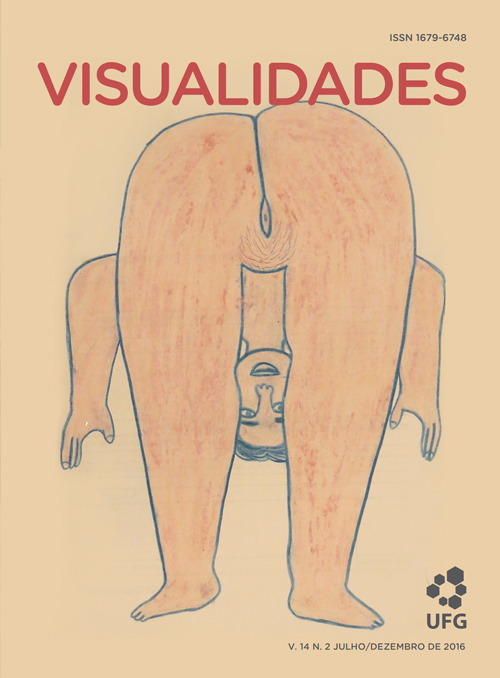Hybrid narratives: the static and the mobile in the “911” Cia de Foto video
DOI:
https://doi.org/10.5216/vis.v14i2.40162Abstract
This article aims to analyse the video “911” produced by the collective of photographers Cia de Foto to reflect about its technical and aesthetical characteristics that point to new forms of editing and presenting the subjects in contemporary documentary photography. When combining static and moving images, the collective challenges the traditional model of the realistic narratives made by photojournalism and classic documentary throughout the 20th century. In “911”, the fiction is assumed by Cia de Foto as a way of constructing news visualities and representations of the social issues in the world today.
Keywords: Documentary photography, hybrid narratives, Cia de Foto
Downloads
References
Referências bibliográficas
BEAUMONT, Newhall. The History of Photography. New York: MOMA, 5th edition, 1997.
MACHADO, Arlindo. Pré-cinema e pós-cinema. Campinas, Papirus, 1997.
MOTTA, Luiz Gonzaga. Análise Crítica da Narrativa. Brasília: Editora Universidade de Brasília, 2013.
ROUILLÉ, André. A fotografia: entre documento e arte contemporânea. São Paulo: Editora Senac São Paulo, 2009.
SUTTON, Damian. Photography, cinema, memory: the crystal image of time. Minneapolis, Minnesota Press, 2009.
Sites consultados:
www.paratyemfoco.com/blog
www.ciadefoto.com
www.olhave.com.br/blog
Downloads
Published
How to Cite
Issue
Section
License

This work is licensed under a Creative Commons Attribution 4.0 International License .
Authors who publish in this journal agree to the following terms:
a. Authors retain the copyright and grant the journal the right of first publication, with the work simultaneously licensed under the Creative Commons Attribution 4.0 License which allows the sharing of work with acknowledgment of authorship and initial publication in this journal.
b. Authors are authorized to take additional contracts separately, for non-exclusive distribution of the version of the work published in this journal (eg publish in institutional repository or as a book chapter), with acknowledgment of authorship and initial publication in this journal.
c. Authors are allowed to publish and distribute their work online (eg in institutional repositories or on their personal page) after the initial publication in this journal, as this can generate productive changes, as well as increase the impact and citation of the published work ( See The Effect of Free Access).
Every effort has been made to identify and credit the rights holders of the published images. If you have rights to any of these images and have not been correctly identified, please contact the Visuals magazine and we will publish the correction in one of the next issues.






